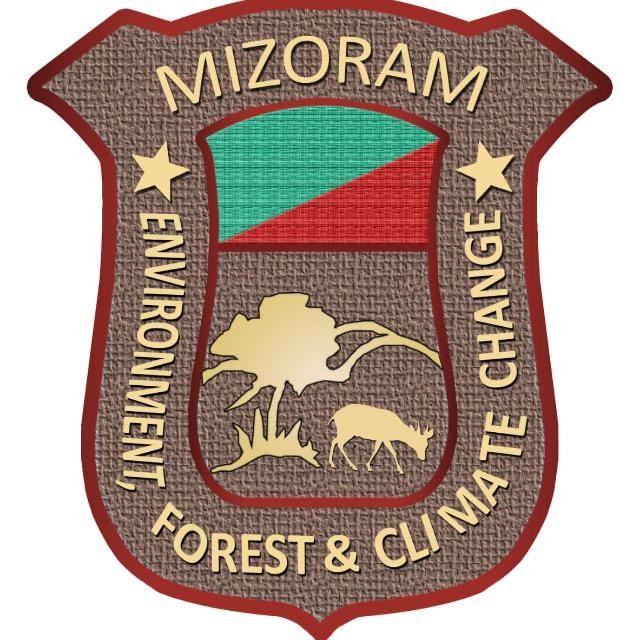TAMDIL WETLAND
- Introduction
Tamdil(Mustard lake) is the second largest lake in the state of Mizoram located in Saitual Sub-Division of Aizawl District. Some historians assume that the lake was formed around 1893 when tremendous landslide occurred due to unusual torrential rains over the entire state. The Government of Mizoram started to keep watch on its ecological importance since 1973. Due to its ecological importance, biodiversity richness and eco-tourism potential, the State Forest Department took initiative for preservation, protection and development of the lake and its surrounding since 1986. - Origin-myth and folklore
It is interesting and worth reading the origin of Ṭam Dil which are enshrouded with myth. It was said that a married couple had a jhum land in this small valley surrounded by small steep hills. The man unfortunately died leaving the wife to care for the crops alone. In the middle of the field was a robust mustard plant, conspicuously bigger than any other plants. One night the widow has a visitation by her husband, who informed her to take special care of the giant mustard plant as it was a harbinger of immense blessing. On the wake, she did as told, and the plant thrived very well. As time went, the widow remarried but the new husband objected to anything reminiscence of the deceased husband, and so he plucked the plant up by the roots and discarded it. The vast hole left in the ground was then soon filled by water (seeping from the plant, according to some versions; from the ground itself, in another version) to become an exquisite lake. Hence the name of Ṭam Dil, Tam means mustard; Dil means lake, for the "lake of the mustard" - Location, area and approach
The lake with its catchment area lies in between two popular high mountain ranges of Chalfilh and Tawitlang in between Latitude 230 45’ 45” N, Longitude 920 55’ 15” E and Latitude 23042’ 40” N, Longitude 92057’ 45” E. The total area under Tamdil Wetland Reserve is 13.7 sq.km.Tamdil lake is located to the south-east, 98 kms from Aizawl City, the state Capital following State Highway towards Champhai upto Saitual/Keifang and diverted towards North via Saitual Town following approach road of about 12 kms.
Fig: Aizawl to palak lake guide map (Source: Google map) - Ecological features including biodiversity
The entire landscape falls within bio-geographical zonation of Indo-Myanmar Biodiversity hotspot with forest type of Tropical semi-evergreen, rich in various species of flora and fauna.Tamdil wetland is surrounded by natural forests with a composition of indigenous bamboo species, trees of various species like Michelia champaca, Terminalia spp., Toona sps., Schima wallichii, Emblica officinalis, etc. Climbers and canes of different species, different varieties of orchids are also found.There are several species of indigenous species of terrestrial birds along with different species of wild animals like Arctistis binturong, Atherurus macrourus, Callosciurus pygerythrus, Capricornis rubidas, Melogale moschata, Martes flavigula, Nycticebus bengalensis, Neofelis nebulosa, Muntiacus vaginalis, Paguma larvata, Prionailurus bengalensis, Paradofelis marmorata, Viverra zibetha, Assamese macaque, Langoors, Centropus sinensis, Dendrocitta formosae, Peacock pheasant, Kalij pheasant, Red jungle fowl, Quails, Emerald dove, Green pigeon etc. and variety of migratory bird species are also found. - Importance of Tamdil lake
Tamdil lake plays a very important and significant roles both in terms of tangible ways as well as intangible ways. Tamdil lake has become a very good eco-tourism hotspot where people from various part of the state enjoy the aesthetic beauty of its surrounding during holidays. The wetland also provide education and research. Tamdil wetland Conservation programme provides pollution free and clean air to the entire neighbouring areas.A ‘National Plan for Conservation of Aquatic Eco-System’ a Centrally Sponsored Scheme is being implemented in Tamdil wetland for holistic restoration and conservation of aquatic eco-systems .A new species of frog called Leptolalax tamdil was described from this lake in 2010. Leptolalax tamdil is an anuran amphibian belonging to the family Megophryidae. It is so far reported only from Tam Dil lake, Mizoram, India. It is a small frog, but medium-sized among Leptolalax species; the male measuring 32.3 mm, and female 31.8 mm. The species is diagnosed with unique features such as eyelids with tubercles, distinct tympanum and supra tympanic folds, undilated toe tips with dermal fringes, long hind limbs, and distinct color patches. - Protection and Management
Management of the lake is fully under the strict control of Environment, Forests and Climate Change Department, Mizoram. The entire area of the Tamdil Wetland is fully protected by the Government with full cooperation and contribution of the Village Councils and the community themselves towards conservation, protection and development of Tamdil Wetland and its surrounding areas shows improvement and free from biotic interferences, encroachment, illegal fishing.


















